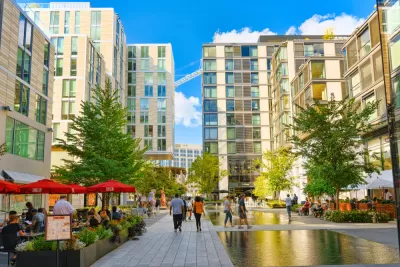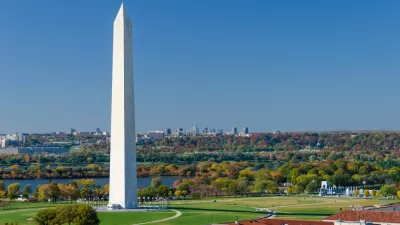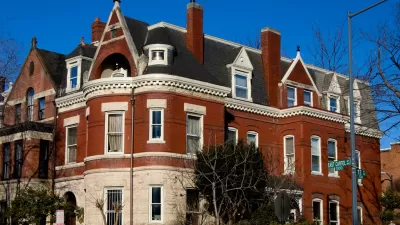In the multi-family residential market of Washington, D.C., LEED-certified buildings ask higher rents of residents.

The Washington, D.C. Office of Revenue Analysis recently published a study of the effects of LEED buildings in the District, generally considered a national leader for green building practices.
Writing for the Office of Revenue Analysis, Rozanne Sazegar explains the green building accomplishments of the District, as measured by the U.S. Green Building Council's LEED certification system:
The city has consistently led the nation in the number of LEED certifications, according to the U. S. Green Building Council (USGBC). This consistency over the years culminated in the city becoming the world’s first LEED Platinum city in 2017. In 2018, the city had 145 certified building projects with 37.1 million LEED-certified gross square feet. This amount of certified gross square footage represents 61.7 square feet of LEED-certified space per resident, the highest ratio among all states and major cities in the country.
In news coverage of the new report, Nena Perry Brown picks up on the outcomes of all the green building, as reported in the study. The most notable finding: occupants of LEED-certified building in the District pay higher rents:
Although multifamily projects are exempt from DC's LEED certification requirements, 27 have been certified since 2000, accounting for 30 percent of new multifamily buildings built in that time. On average, effective rents were 15.2 percent higher in 2018 for LEED-certified buildings than non-LEED buildings, creating a premium of 45 cents per square foot.
FULL STORY: 15 Percent: The LEED Rent Premium in DC

Maui's Vacation Rental Debate Turns Ugly
Verbal attacks, misinformation campaigns and fistfights plague a high-stakes debate to convert thousands of vacation rentals into long-term housing.

Planetizen Federal Action Tracker
A weekly monitor of how Trump’s orders and actions are impacting planners and planning in America.

In Urban Planning, AI Prompting Could be the New Design Thinking
Creativity has long been key to great urban design. What if we see AI as our new creative partner?

San Francisco Mayor Backtracks on Homelessness Goal
Mayor Dan Lurie ran on a promise to build 1,500 additional shelter beds in the city, complete with supportive services. Now, his office says they are “shifting strategy” to focus on prevention and mental health treatment.

How Trump's HUD Budget Proposal Would Harm Homelessness Response
Experts say the change to the HUD budget would make it more difficult to identify people who are homeless and connect them with services, and to prevent homelessness.

The Vast Potential of the Right-of-Way
One writer argues that the space between two building faces is the most important element of the built environment.
Urban Design for Planners 1: Software Tools
This six-course series explores essential urban design concepts using open source software and equips planners with the tools they need to participate fully in the urban design process.
Planning for Universal Design
Learn the tools for implementing Universal Design in planning regulations.
Gallatin County Department of Planning & Community Development
Heyer Gruel & Associates PA
JM Goldson LLC
Mpact (founded as Rail~Volution)
City of Camden Redevelopment Agency
City of Astoria
Jefferson Parish Government
Camden Redevelopment Agency
City of Claremont





























